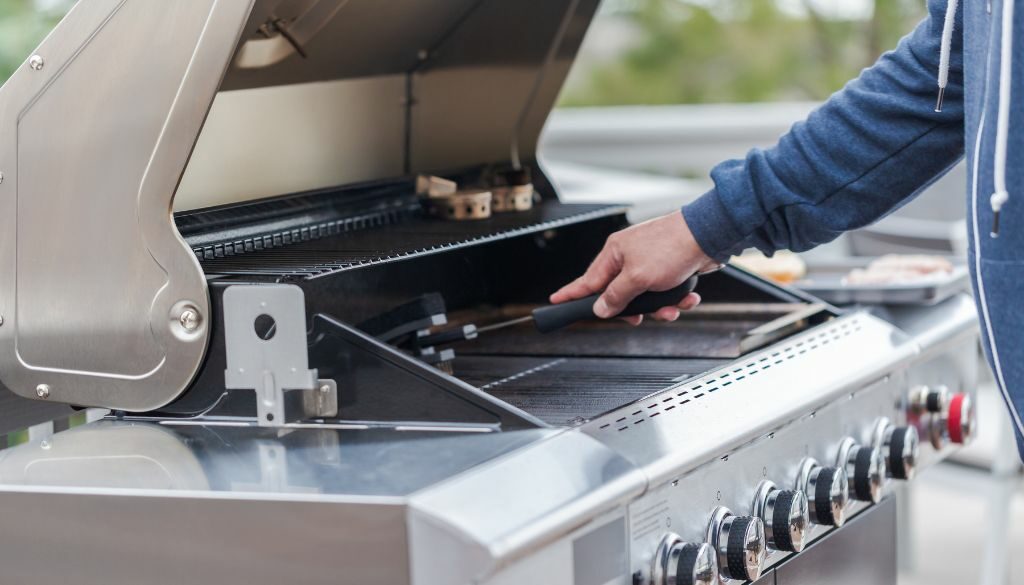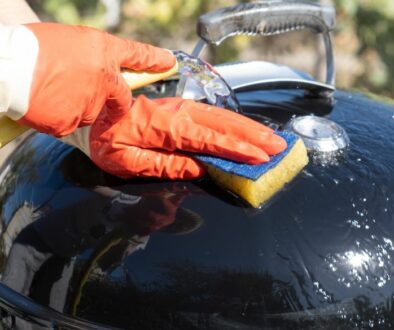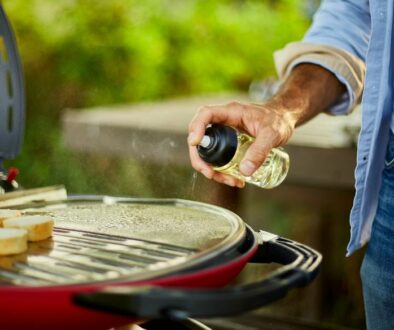How to Get Your Grill Ready for Summer
The best thing about grilling season is all the delicious food you get to eat. The worst thing about grilling season is all the time and effort it takes to clean your grill. But don’t worry! Cleaning your grill doesn’t have to be a chore—it can be fun and rewarding if you follow these steps:
Check the propane
Propane grills are great for summer because they’re convenient and fuel efficient. But when you need to get your grill ready for the season, it’s important to make sure everything is in good condition.
First, check the propane tank for leaks. If there are any cracks or holes in the tank, you’ll want to replace it before using the grill again. Also make sure that your tank is full—you don’t want to run out of gas right when you’re about to cook up some burgers!
Next, check all connections on your regulator and valve, as well as any hoses or connectors between them. Make sure everything is tightened securely so there will be no leaks when you turn it on later on this summer (or fall).
If your grill uses an igniter instead of an electric starter button like most modern models do nowadays, test this component by turning off all other sources of electricity (like power strips) then lighting a match near where this component would be located inside its compartment; if nothing happens then either replace it completely or try cleaning off any dust buildup inside first before trying again later down at home depot after work today.
But if you have a charcoal grill, the fuel check process is much simpler, you just have to check that you have enough charcoal stored and that it is still in a usable condition. There are times that over time the coal loses its properties to keep burning for hours. To verify that your charcoal stock is still in good condition, you can take a piece of charcoal and place it in the stove, if it burns quickly, it can still be used, otherwise you should buy new supplies of charcoal for your grill.
Deep clean the grill
Once you’ve dusted the grill off and removed any loose particles, it’s time to get serious.
To clean the grates: First, take a look at your grill brush. If you haven’t used it since last summer, now is a good time to change it out. It’s best to go with one that has a long handle and bristles made of brass or stainless steel—these materials won’t rust like cheaper ones will over time. To clean the grates, simply sprinkle them with kosher salt or baking soda and scrub them with your new brush—the salt will act as an abrasive agent while the soda helps cut through grease and grime.
Once those are cleaned off (or after you’ve run them under water), give them another scrubbing with some cooking oil—this will help prevent food from sticking when they’re heated up later on this summer!
To clean the lid: The lid can also be cleaned from inside of your grill by using an oven mitt to grip onto its ridges so that when you turn it upside down onto a towel-lined countertop (or work surface), any debris will fall out onto said towel instead of falling back into places where they might cause trouble later on during cooking sessions throughout this coming year.”
Wash the inside and outside of the grill lid
To clean the inside of the lid, you can spray a little of your favorite degreaser and rub gently so that all the grease that accumulates in that place comes out easily and quickly, you must not forget to use thick latex gloves to keep your hands at bay. Except for corrosive chemical products, for this reason we recommend you use natural degreasers. At the end, you can go over with a damp towel to remove any traces of grease or cleaner.
To clean the top of the lid, you can spray on some surface cleaner and gently rub with a cleaning pad, it will be shiny and like new.
Use a soft brush to remove dirt and debris from the hinges and fasteners, then wipe them down with soap and water until they are clean. If you don’t have access to a sink, use a wet rag or paper towels until you can get back home for a more thorough cleaning later on.
Dry thoroughly before reassembling your grill lid so it doesn’t rust over time!
Freshen the grates
You might think this is a no-brainer, but it’s important to make sure your grill grates are in tip-top shape. If you have a propane or charcoal grill with removable grates, take them off and scrub them down with a grill brush or dish soap and water. Once they’re clean, dry them off immediately so they don’t rust in storage over the winter months. If you have a gas grill that has nonporous porcelain-coated cast iron grates on it (this is common), pad them with foil (or use an oven mitt) while cleaning so you don’t ruin their finish. Then wipe everything down with oil before putting everything away for storage—it’ll keep the grates from rusting during storage.
Polish your tools
Now that you’ve cleaned your grill, it’s time to take some care of the tools you used.
First, use a wire brush to clean the burner tubes and burners. A scraper can also do the trick if you don’t have a wire brush handy. Next, wipe down your grill lid with a cloth to remove any leftover dirt or grime before polishing it with a cleaning pad (or just water if there isn’t much grease). Finally, scrub out any remaining dirt on your grill body with another cleaning pad (again, water might work here).
In the same way you can wash your grill tools such as a spatula to turn hamburgers and tongs to foltar steak and vegetables on the grill.
Test ignition system
Test for leaks. This is your first step in checking the condition of your grill’s ignition system, as any leak will prevent a burn from starting up properly. Make sure that all connections are tight, and check for broken parts or cracked hoses. If you find any of these issues, they may require replacing before you can use your grill again.
Check vent holes and fuel lines for clogs. Vent holes allow air to enter the combustion chamber while fuel lines deliver fuel to ignite it in the chamber itself—so if either one gets clogged up with debris (like leaves or dirt), it could cause problems when you try to start it up later on! If this happens after already starting your grill once (or twice), make sure not only these areas are clear but also that there are no other obstructions anywhere else inside its structure before proceeding further down this list with other steps like checking flame sensors’ wiring connections or igniter electrodes’ condition
That’s it! It’s time to start grilling. Now go get some burgers and hot dogs! Don’t skip these steps and they will keep your grill in good shape year after year.




